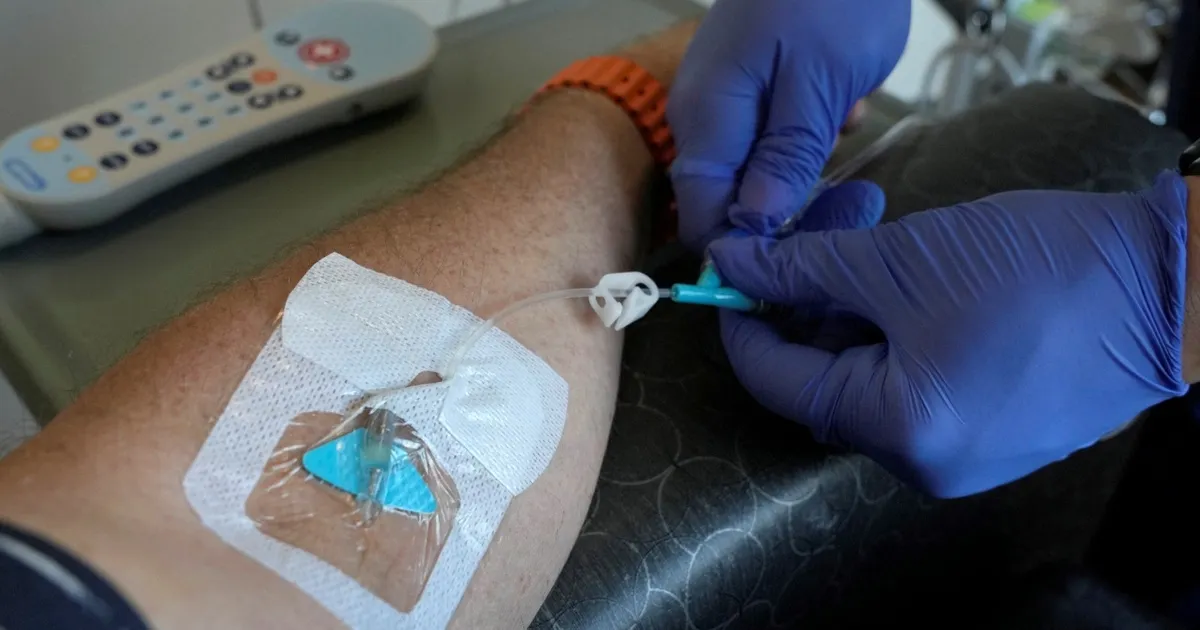A new study has shown that a specific diet can help treat damage to the intestines due to chemotherapy or radiotherapy. The study prepared by researchers at the Massachusetts Institute of Technology (MIT) indicated that the diet rich in amino acid opened a path to immune signals, which helps stem cells to reproduce new tissues for the bowel lining. This rebirth can play a role in the treatment of injuries caused by radiotherapy, often affecting patients who undergo cancer treatment. Although the study published in the “Nature” journal was conducted on the mice, researchers see that if future studies show similar results in people, eating high amounts of cystin, whether by diet or supplements, can provide a new strategy to accelerate the healing of damaged tissues. “If future research shows similar results on humans, giving large doses of cystin the pain caused by chemotherapy or radiotherapy in the lining of the intestines,” says Omar Yilmaz, the leader of the study of the Massachusetts Institute of Technology. Yilmaz added: “The positive thing here is that we do not use an industrial connection, but rather use a natural food connection.” Although previous research has shown that certain types of diets, including low -calorie systems, can improve the bowel stem cell activity, this study is the first to determine one dining element that can stimulate the regeneration of bowel cells. In the new study, researchers began to feed the mice as a rich diet in one of the twenty amino acids, which are the basic building blocks of protein. They measured the effect of each amino acid on the regeneration of intestinal stem cells, and it had the most obvious effects on stem cells and Salafi cells (immature cells turning into adult intestinal cells). Subsequent studies have revealed that Cystin introduces a series of events that stimulate a group of immune cells known as CD8 cells. If the cells of the lining of the gut absorbed cystine from digested foods, it turns it into an aid boat known as COA, it is excreted in the lining of the mucus gut. There, CD8 cells absorb this compound, which stimulates them to reproduce and produce cytokine il-22. IL-22 is important in regulating the regeneration of bowel stem cells, but it was not previously known that CD8 cells could produce it to improve this process. Once activated, IL-22 cells are ready to suffer any injury that can occur in the bowel lining. Yilmaz further said: “What raises enthusiasm here is that nourishing mice with a nastine-rich diet lead to an extension in a group of immune cells that are usually not associated with the production of IL-22 and regulate the properties of bowel stem cells.” He continued: “What is happening in this diet is an increase in the number of cells produced for IL-22, especially CD8 cells.” These cells usually combine in the lining of the intestines, making it in a suitable place if needed. Researchers have found that the activation of CD8 cells is mainly found in the small intestine, not in other parts of the digestive system because most protein we eat is absorbed into the small intestine. The treatment of the gut The study showed that the regeneration caused by the diet rich in cystine can help restore the damage caused by radiation in the lining of the intestines. Unpublished research has also shown after the diet rich in Sistin has a rebirth after treatment with a chemical known as Florouracil 5, which is used to treat colon and pancreas, but it can harm the bowel lining. Cysteine is available in very protein -rich foods, such as meat, dairy products, legumes and nuts. The body can also selfie produced by converting the mitonin amino acid into cystine, which is a process found in the liver, but the liver produced in the liver is spread throughout the body and does not lead to its accumulation in the small intestine as it happens when it is eaten by food. Sistin has previously proven anti -oxidant characteristics, and it is also useful, but this study is the first to show its effect on the regeneration of bowel stem cells. The researchers now hope to study whether the Sistin can also help renew other types of stem cells. In an ongoing study, the team looks at the possibility of stimulating the renewal of hair follicles. They also intend to continue to study other amino acids that seem to affect the regeneration of stem cells. “I think we will discover several new mechanisms on how to organize these amino acids from the decisions of the fate of the cells and the intestinal health in the small intestine and the colon.”
A study that reveals a diet that can treat bowel damage due to ‘chemical’
